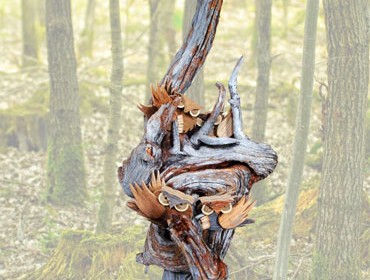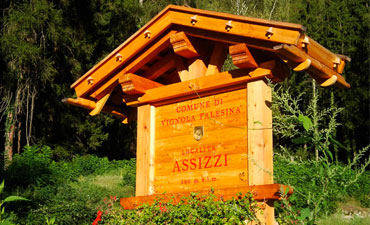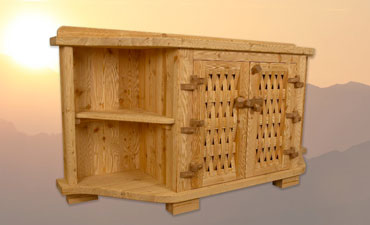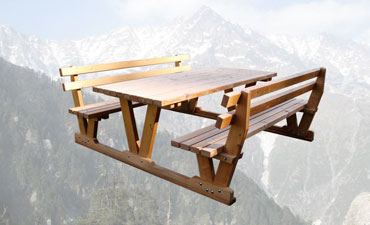THE SIGNIFICANCE OF OUTDOOR CRUCIFIXES (WEGKREUZE) IN TRENTINO ALTO ADIGE - SUEDTIROL.
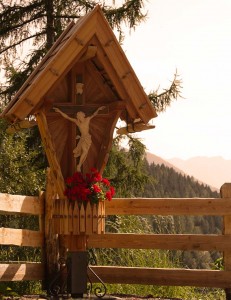
Monuments - the presence of these outdoor crucifixes (wegkreuze) in Trentino Alto Adige - Suedtirol, does not go unobserved and is partly integrated in the sacred landscape that tells the history of the people that use to live and still live in that region. It is so that the faith is expressed throughout the alpine region, therefore, also the area that it belongs to, even though styles may vary. The custom for putting crucifixes throughout the countryside have deep meaning, probably dating back to the precristian pagan culture.
Even outside of Trentino it is possible to site these sacred places in certain areas (cross-roads, hills, boarders etc...), in particular in distant western cultures, in certain West African zones, for example, you can see many fetishes defined "Legba" which are protection places for people who pass by that area. In reality these "sacred places", like cross-roads, mountain ridges or dividing valleys, have a great symbolic importance and express the persons ideas regarding a choice between 2 roads, 2 ways to go, indicating anguish for the person.
But what is the significance of outdoor crucifixes?
The symbol of the cross is strongly sacred, important and evocative. You can say that the cross, seen as a horizontal plank which combines with a vertical one is said to be magical and a base for energy. Many populations, antique or not, make the sign of the cross, in many ways and forms, indicating the union between the sky and earth, male and female (indicating the union to create new life).
The crucifix in many forms:
A cross in a circle gives great therapeutic forces and were used by healers in may different native american cultures: "uto-aztech".
The Tarahumara (Chihuahua, Mexico) combine the cross with corn, a sacred element which was a sign of their harvest God Tlaloc. In indo-european culture we find the cross tilted (Hackenkreuz) which indicated the movement of the sun from east to west bringing heat to life.
"OUR" crucifixes
Crucifixes which we may find in our region, on mountain tops, by roads etc.. indicate different spirital meanings which we will indicate in 3 different types:
Croci epigrafiche
In tempi antichi, dall’alto medioevo, queste semplici croci di legno o di pietra, senza Cristo appeso, indicavano luoghi dove erano successi fatti di “cronaca nera” (diremmo oggi). Venivano erette in posti dove erano avvenuti incidenti mortali, omicidi e potevano valere come misura sostitutiva o aggiuntiva di pene inflitte dagli antichi tribunali giudiziari. Generalmente venivano corredate di un’epigrafe che chiariva i motivi della sua presenza, magari con l’invito al passante ad una prece per le anime delle persone morte in maniera violenta o improvvisa.
Inscripted Crucifixes
In the middle ages, these crucifixes made of wood or stone (without Christ) indicated places where something terrible happened, for example a bad accident, murder etc... Genereally they had ingravings of what happened at that spot and this invited passers by to say a prayer for the souls of the people who died there.
Crucifixes on boarders
Generally these were made in stone and indicated jurisdictional boarders, regional boarders and property boarders.
"Apotropaiche" cursifixes
In the middle ages there was a cultural division, divided into "sacred" and "profane". The sacred places were the churches, churchyards, villages, cities protected by saints, cemeteries and in general all the places where people lived.
The other part was seen as places which included demons, witches, wizards and animals which symbolize spirital myths. Here we find crusifixes made for protection of land and pastures, they were placed on top of mountains and in the centre of cemeteries.
These traditions were very important and use to have the original form (as in Jerusalem). Still today these crucifixes can be seen, expecially in Alto Adige - Suedtirol in their original form. These were also placed in guard against fires, all the 'bad' forces nature had to give, the faith and strength of the people helped them continue on.
Cross-road crucifixes
There are also crucifixes placed at cross-roads indicating decisions in life , an existance of choices - dubbious or dangerous, pilgramages between sky and earth. They ask for stength, health and a hand in moments of suffering and a sense in life.
Most of all in the XIX-XX century the Christs were made of wood, the crucifixes in larch and the Christs in pine wood. Sometimes the statues were also coloured. Also, these crucifixes were usually protected behind by a plank in which were engraved religious symbols such as the spear, the nails and hammer and the sponge.
I would like to quote a phrase from Aldo Gorfer who outlined features of Christ in our region:
"These village Christs are the witnesses of a time that summurizes the existance of generations and landscape in which generations have moved.
A large group of monks have Christ crucifixes in the hills of Trentino. Other monks who have a vote to silence are Christs of Fiemme, Fassa, Primiero. Segaligni are the Christs of Anaunia, and a large group are from Giudicarie. They placed them at cross-roads as a warning of time revolving"
(Aldo Gorfer, Terra mia, Saturnia, Trento 1980)


